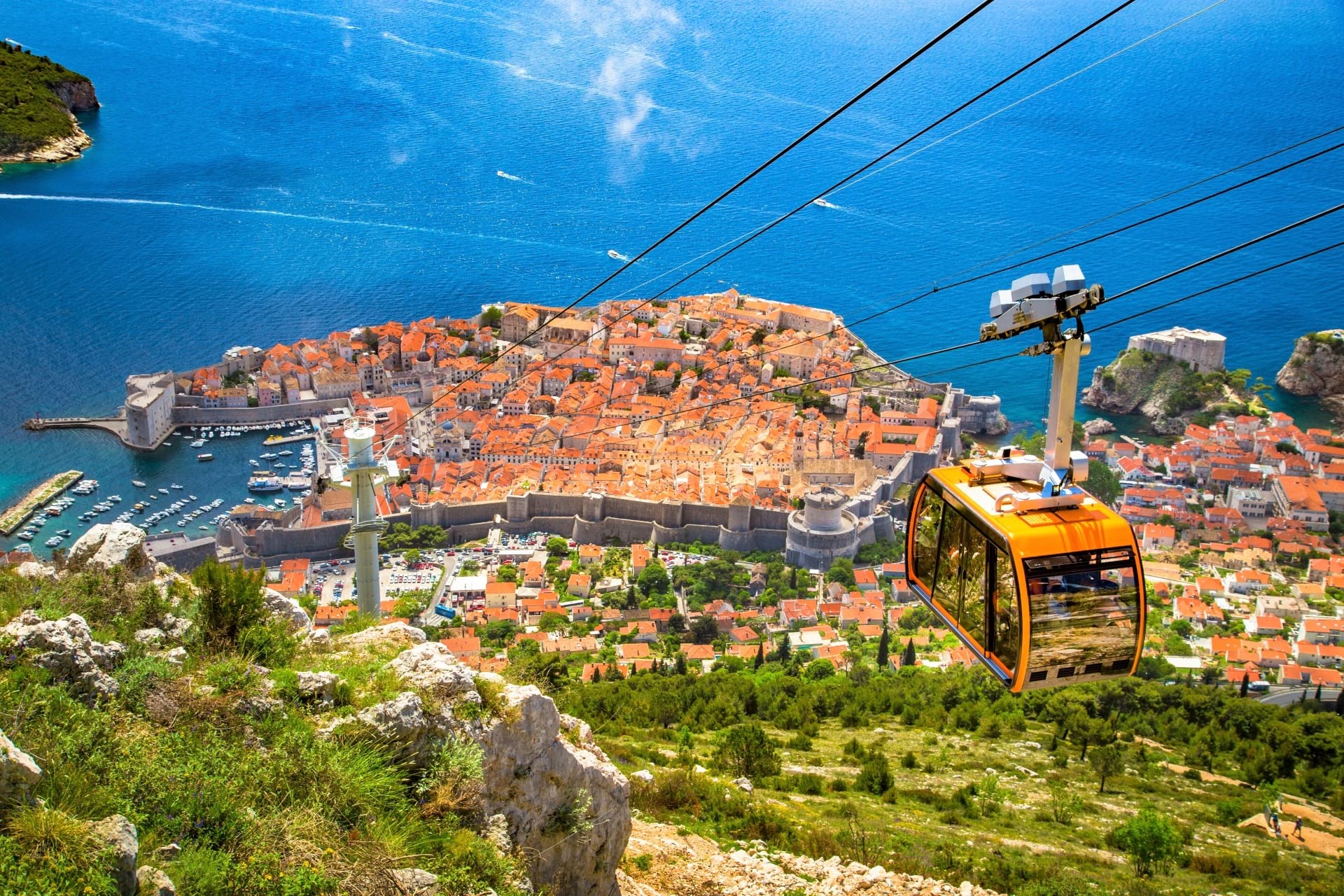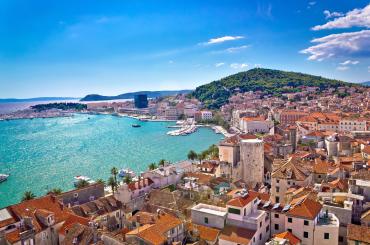
City breaks trip
Situated in the sunniest part of Croatia, Dubrovnik is known as one of the world’s finest and most perfectly preserved medieval cities in the world. In five days, you will discover the neatly contained Dubrovnik centre, a famous UNESCO World Heritage site, as well as some nearby significant sites such as Korčula town, Pelješac peninsula and Elafiti islands.
Extremely versatile trip designer with an established career in travel business
Fill out a few details and get a detailed itinerary with all inclusions and trip details - we can customize them together
Even if you have never been in the amazing medieval city of Dubrovnik, you probably heard about the eternal and stunning beauty of this Croatian Mediterranean gem you have to put on your bucket list.
Once you take a tour of the Walls of Dubrovnik, stroll through the main street Stradun and explore the alleys that lead to the walls, you will see for yourself why this sophisticated city has been used as a filming location for “Game of Thrones“, “Star Wars: Episode VIII“ and Leonardo DiCaprio's “Robin Hood“.
Dubrovnik has been inscribed on UNESCO's World Heritage List ever since its inception four decades ago because the beauty of the city, with its Renaissance, Gothic and Baroque façades, leaves everyone in awe. As you drive to Dubrovnik from the south, a breath-taking view of the Old Town opens up. Don't worry, though, because there is a lay-by here that is just perfect for taking photos. The top of Mount Srđ overlooking Dubrovnik is a fantastic selfie spot and you can reach it by cable car or hiking.
The town of Korčula is an ancient trading hub situated on an island near Dubrovnik
You are about to discover the basic highlights of Dubrovnik. Here you can learn a few interesting facts about each of them.
Dubrovnik
This historic city-state used to be a maritime powerhouse that gained clout through diplomatic prowess. Dubrovnik was the first country in Europe to abolish slavery and it also introduced sewage and fire safety systems, a retirement home, double-entry bookkeeping, maritime and insurance laws as early as the Middle Ages. One legal provision was particularly amusing: the city government was not allowed to make any important decisions during the period of the “jugo“, a wind that blows from the south that is usually blamed for ill moods by the inhabitants of the Adriatic Region. So, we can safely assume that the denizens of Dubrovnik were refreshingly reasonable and had a penchant for hedonism, as evidenced by their villas in the surrounding area.
Dubrovnik was one of the first cities in Europe to give fresh water to its citizens and to build a working sewage system.
The Franciscan monastery is one of the oldest buildings in the city full to the brim with old buildings. Amazingly it houses one of the oldest, continually in-use pharmacies in Europe.
Stradun is the main street in the Old Town of Dubrovnik and it connects Gate of Pile and Gate of Ploče. Its name comes from old Venetian word for “big street”, but not many know that locals also like to call the street Placa. Stradun is 300 metres long and there are many monuments you can see while walking along the street, such as Large and Small Onofrio Fountain, St. Saviour Church, Sponza Palace and St. Blaise’s Church (the patron saint of Dubrovnik).
South of Dubrovnik, you will find Cavtat, a picturesque town located on the peninsula, while the nearby fertile Konavle plateau is the perfect destination for exploring the local rural tourism offer. Mlini and Slano are tourism hubs unaffected by the hustle and bustle of the city, yet located just a stone's throw from Dubrovnik. The Neretva River delta is famous for its mandarin plantations, eel and frog dishes, shallow riverboats and an archaeological site that dates back to the Roman period located in the village of Vid.
Korčula Island
Korčula is one of the largest islands in southern Dalmatia and is surrounded by approximately some 50 islets. The town of Korčula, an ancient trading hub, is surrounded by walls that offer a view of the myriad islets and the steep slopes of the Pelješac peninsula on the other side of the strait. Two popular sandy beaches are located on the very south of the island, while somewhat more intimate areas by the sea can be reached by bicycle or on foot.
Two popular theories are circulating on the island of Korčula: that this is the birthplace of Marco Polo and that Odysseus stumbled upon Circe here on this very island some 2000 years ago.
The easiest way to reach Korčula is by taking a 20-minute ferry ride from the town of Orebić on the Pelješac peninsula.
Pelješac Peninsula
The large Pelješac peninsula in the south of Croatia is one of the foremost wine-producing regions in the country, so once you start exploring the mainland you will discover small secluded wineries growing grapevines on slopes bathed in the Mediterranean sun. The most popular grape variety is Zinfandel's first cousin Plavac Mali, while the most famous vineyards are located in the Dingač area. Besides wine, Pelješac also boasts some gorgeous beaches, ancient walls that used to protect the northern border of the Republic of Ragusa Dubrovnik city-state, and delectable locally grown oysters.
Orebić is famous for its sea captains, who used to build magnificent villas in the town and its long shingle pebble beaches. The stunning historic town of Korčula, which is located on the eponymous island, is easily accessible from Orebić. The nearby village of Viganj holds the reputation of being the best windsurfing location on the Adriatic coast, while hikers who decide to climb Mount St. Elijah will be rewarded with one of the most awe-inspiring views of the Adriatic Sea.
Ston is known for its old saltworks and Mali Ston is famous for its oysters. These two towns are connected by walls spanning several kilometres, which once protected the northern border of the Republic of Ragusa.
Elaphite Islands
The group of islands commonly known as the Elaphites – with Lopud, Koločep and Šipan being the largest ones – was the favourite summer resort of the erstwhile residents of Dubrovnik, which is evident from the posh villas and old churches that dot the island. Šipan is the largest island in the archipelago with a single road connecting the only two villages there, while you won't find any cars at all on Koločep and Lopud. When the boats transporting the daily excursionists finally leave for Dubrovnik, the islands become tranquil again.
Even during the heyday of the Dubrovnik city-state, everyday life on the islands was slow and relaxed. This is the perfect place for unwinding and spending long hot days without a care in the world!
Besides the three large islands, the Elaphites comprise a dozen mostly uninhabited islets. The name, which is of Greek origin, means “deer islands“ and it was first mentioned by several ancient geographers. It is uncertain whether deer lived on the islands or if they got the name due to their resemblance to deer when viewed from the top of Mount Srđ overlooking Dubrovnik.
Upon arrival, enjoy a private transfer from Dubrovnik Airport to your hotel for check-in. If you're feeling energetic, take a leisurely stroll through the enchanting streets of Dubrovnik. Savor a meal at one of the city’s renowned restaurants like Tavulin, Proto, Kopun, Nautika, Vapor, Pantarul, or Nico's.
The top of Mount Srđ overlooking Dubrovnik is a fantastic selfie spot
After breakfast, embark on a private guided tour of Dubrovnik’s Old Town. This UNESCO World Heritage site boasts stunning medieval architecture and impressive city walls. Starting at Pile Square, navigate the narrow streets and lively piazzas and marvel at landmarks such as the Sponza Palace and St. Blaise Church. Stroll down the bustling Stradun, reaching the Cathedral and the Rector’s Palace, which highlight Dubrovnik’s rich history as the Republic of Ragusa.
Enjoy an early breakfast before setting out for a day exploring the Pelješac peninsula and Korčula Island, reputedly the birthplace of Marco Polo. Discover the scenic peninsula with its lush vineyards and Mediterranean flora. Visit local wineries, where you’ll taste exquisite wines and learn about their production, surrounded by stunning landscapes.
Šipan was the favourite summer resort of the erstwhile residents of Dubrovnik, which is evident from the posh villas and old churches that dot the island
Start your day with an early breakfast, then head out for a full-day tour of the Elaphite Islands. This archipelago northwest of Dubrovnik consists of 13 islands, with Koločep, Lopud, and Šipan being the highlights. Swim in crystal-clear waters, explore quaint villages, and wander through the lush Mediterranean vegetation. Enjoy a delicious lunch as you island-hop, taking in the natural beauty and local charm.
Ston is known for its protective walls, fortress and old saltworks. It was once the border town of the ancient Republic of Ragusa
After breakfast, check out from your hotel. If time permits, visit the Grand Market to sample traditional local sweets like dried figs, arancini (candied orange peel), and broštulani mjenduli (candied almonds). Enjoy a final taste of Dubrovnik before your private transfer to the airport. Safe travels and see you again soon!
We will double-check availability and make reservations for your rooms, restaurants, guides etc.
With reservations confirmed, we will prepare the best offer possible in regard to your arrival date & party size
You will get the offer via e-mail, along with the payment options. Feel free to request further customisations!
5 DAYS
4 DAYS
3 DAYS



